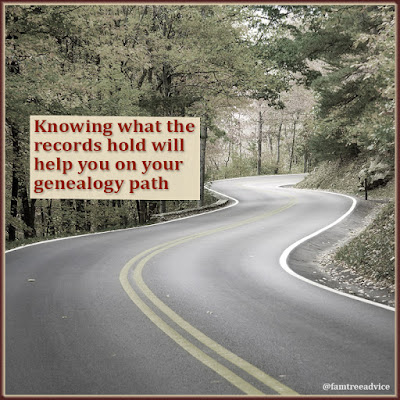I love having access to tens of thousands of vital records from my ancestral hometown. Some of the birth records from Colle Sannita, Italy, helped prepare me for my visit to the town in 2018. I was able to walk along the street where my great grandfather was born. In another town, I found the house where my great grandmother died.
European towns seem ancient to my American sensibilities. But they do change street names sometimes. Some streets in the old documents aren't on today's map. When I enter some addresses into Family Tree Maker, it can't find the street and puts the map pin almost anywhere. I hate that!
 |
| On my 1st trip to Grandpa's town, I thought I'd see my name on a doorway. Now, finally, I am prepared to walk in his footsteps. |
I needed to update the non-existent addresses in my family tree to current-day street names. I want to be able to go to the places my ancestors lived when I return to Italy. After thinking about this for a while, I realized I had the perfect resource.
In 2007 I posted a message on an Italian ancestry message board. The man who answered me was an historian from my Grandpa Iamarino's hometown. He told me that Iamarino was one of the earliest names from the town of Colle Sannita. He also said he was writing a book about the town.
Fast forward to today. I have his book about Grandpa's town sitting on my desk at all times. The heart of the book is a 1742 town census. I've managed to add many of the 560 households from that time to my family tree.
There's plenty more to the book. It's written in Italian, so I've added many Post-It Notes to the pages for future translation.
The other day I sent a message to the author. I asked him how I can find out the current names of old streets in the town. He told me I'd find the answers in his book. I opened my copy and found one of my Post-It Notes. "This tells where to find the old street names," I had written.
It was exactly what I needed. This passage mentions all the streets and neighborhoods listed in the 1742 census. Then it explains where to find those streets and neighborhoods today.
I've discovered so much about my Colle Sannita family through vital records and this book. Over and over, one neighborhood seemed to always hold relatives of mine. Its name was li Tufi. Sometimes Strada (street) li Tufi, sometimes Via (also street) Tufi. Each time I saw li Tufi I thought, "Oh, they're my people for sure."
But there is no mention of anything named Tufi on a modern map of Grandpa's hometown.
That's why this book, "Colle Sannita nel 1742," is the most important book I own. I learned that the former li Tufi is a neighborhood of three parallel streets near the center of town. They renamed the ancient streets for the first king of Italy:
- Via Calata Vittorio Emanuele (calata means descent)
- Via Vittorio Emanuele
- Via Gradoni Vittorio Emanuele (gradoni means steps)
This is major news to me! It means I can walk these streets on my next visit. I expect to feel weak in the knees. (And not just because it's hilly.)
 |
| Leave yourself notes as you learn the current name of your ancestors' ancient roads. |
Next I needed to update the streets in Family Tree Maker so the program would place them on the map. I had to keep track of my changes to avoid future confusion.
I used the Plan tab in Family Tree Maker. I made a new, high-priority task for each street with a name change. (Choosing "high-priority" keeps the items at the top of the list.) I can check these items whenever I'm adding another birth or death record for an old street name.
The format of these task items is very simple:
- old street name = new street name
For example, li Tufi = Via Vittorio Emanuele. (It's actually three streets, but I decided to split the difference.)
After pulling information from the book, I still had six old street names that are no longer in the town. While these six didn't exist in 1742, they did exist throughout the 1800s. I asked the author, and he told me what I needed.
To update street names in our ancestral towns we need a modern reference to the historical town. I encourage you to seek out any written history of your ancestral hometowns. Do not let a foreign language stop you. You can find the street names you need by eye. Then use Google Translator to understand what the book says.
With this type of update to your ancestral addresses, you may be able to someday walk where they walked.



